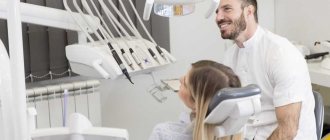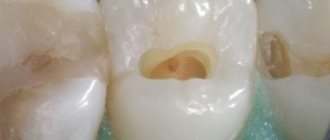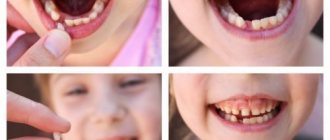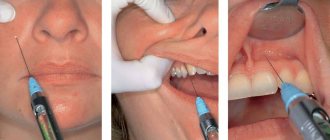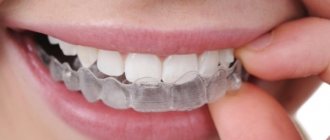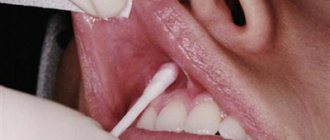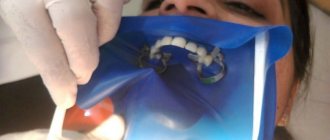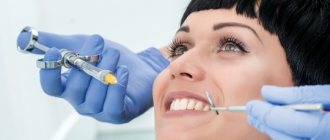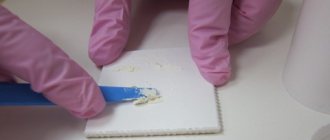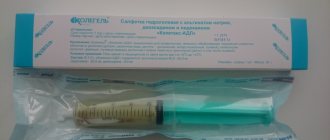Content
hide
1 Why is it important to treat baby teeth on time?
2 Features of filling baby teeth in children
3 Is silvering teeth an alternative method?
4 Cost of filling baby teeth
5 Technical points
6 Why is it necessary to fill teeth?
7 More about anesthesia
8 What to do if you don’t want to fill your baby teeth?
Caring for children's teeth is an acute and problematic issue. How many things violate children's oral hygiene: frequent consumption of sweets, violation of a healthy diet, irregular teeth brushing. The result is diseases of baby teeth, unpleasant symptoms and, of course, a visit to the dentist. This is stressful for both adults and children.
Parents worry about the baby, but the child is simply afraid of unpleasant and unfamiliar sensations. Fortunately, in modern dental clinics, doctors find an approach to a young patient, creating a friendly atmosphere so that the child does not regard the treatment as something scary.
It is under such conditions that filling of children’s baby teeth takes place, if parents make the right choice of a medical institution. In addition, delaying filling is an extremely dangerous undertaking, from which nothing good will come. Dental pathology affects all organs and systems, leading to complications and impaired formation of permanent teeth.
Why is it important to treat baby teeth on time?
Sanitation of the oral cavity and filling of baby teeth is necessary in order to eliminate inflammatory processes, the growth of bacterial flora, and also to create normal conditions for the formation of a healthy bite and full-fledged permanent teeth.
Caries of primary teeth is a problem that needs to be addressed immediately. It is necessary to carefully examine the child's teeth in good lighting. You can do this during hygiene procedures. You should pay attention to spots, light areas on the enamel, violations of its integrity, black spots, and gum pathology. These minor symptoms indicate that there is an increased risk of infection spreading into deep tissues.
The most common and at the same time erroneous opinion is that baby teeth do not need to be treated, because they will fall out anyway. But while the child is sick, his entire body suffers, the immune defense is disrupted, the digestive system malfunctions, deep tissues are involved in the process, as well as permanent teeth that will not fall out and will serve the person for the rest of his life. The focus of the pathology spreads the infection throughout the body; secondary complications may occur throughout the body, because germs and bacteria are spread along the bloodstream.
The advantage of filling over silver plating
Silvering of teeth is the smearing of teeth with silver nitrate, which has an antiseptic effect. Its disinfecting properties should stop the spread of caries.
However, silvering is only a method of preserving destruction, permissible only in the very early stages, and not a treatment. In some cases, silvering does not help, and the carious process moves on imperceptibly underneath it.
Giving a child a filling is the most effective way to solve the problem of caries.
You can make an appointment at the Shifa pediatric dentistry by calling the contact number or using a special form. We try to provide our clients with the most favorable cost of treatment - check out the price list on the “Prices” page.
Features of filling baby teeth in children
Modern pediatric dentistry has a variety of tools, equipment and materials that make fillings high-quality and long-lasting. The most commonly used is composite. This material has the property of self-hardening. A composite complex with glass ionomer cement is also used. This filling material adheres well to the surrounding tooth tissues, is resistant to external factors, and lends itself well to working with tools.
Treatment of caries in children
We can cure caries at the spot stage without drilling - with the help of restorative drugs.
With medium and deep lesions, alas, it is impossible to do without eliminating the lesions. Don’t worry - we have experienced dentists who know how to make friends with children and adapt them to treatment. For children with negative experiences with dental treatment, we will provide an adaptive appointment. During it we will show and talk about our equipment and tools in a playful way, and carry out professional hygiene.
We will use safe application anesthesia (Lidocaine, Lidoxor) before administering invasive anesthesia, so the child will not feel any discomfort.
We will restore teeth using high-quality filling materials (glass ionomer cements, light-curing composites).
Technical points
In general, filling teeth follows the same principle as installing fillings in permanent teeth. The only caveat is that the filling material is deliberately installed for a certain time, since the tooth itself will fall out over time. Another point - during filling, the doctor works with the diseased and adjacent tooth to prevent the spread of the infectious process.
In order to cure caries of primary teeth, the dentist uses the following techniques:
- manual tissue preparation is used. The use of machinery is required if the cavity is deep enough and manual processing is not enough;
- treatment with chemicals that eliminate the source of destroyed tissue;
- ordinary processing, which involves the use of a drill.
Of course, when filling teeth, anesthesia is used so that the child does not feel pain and the doctor feels comfortable working. It is important to choose the right anesthetic, administer a sufficient amount, and be careful with dosages.
Treatment of a baby tooth is a more rational choice than tooth extraction. Preservation of the jaw area plays a role in the formation of the bite, ensures normal chewing function, diction, and facial contours. Extraction is carried out only in a number of cases when this method is the only one possible. The choice of treatment method is decided by the attending physician on the basis of diagnostic data, as well as based on the characteristics of the young patient’s oral cavity.
How fillings are done in Shifa dentistry
Dental treatment is possible only with the child’s consent, willingness to open his mouth and permission to put a filling. In case of a high level of anxiety, psychological preparation for treatment is indicated; it consists of preparatory teeth cleaning and demonstration of the stages of treatment on a model of artificial teeth. Give the pediatric dentist the opportunity to provide your child with details about the upcoming procedure at the first visit. Having experience communicating with children of different ages, the doctor can predict the child’s reaction.
For young children (up to 3 years old), as well as in the case of a child’s categorical refusal of treatment, sedation may be used.
The installation of children's fillings takes place in the following sequence:
- topical anesthesia - treatment of the gums with painkillers to reduce sensitivity at the site of the upcoming injection;
- local anesthesia - injection into the gums in the area of the upcoming treatment;
- cleaning the affected tooth structures using a bur under the control of a caries detector;
- direct filling;
- grinding and polishing the filling surface.
The installation of fillings in our clinic complies with international standards of pediatric dentistry.
Why is it necessary to fill teeth?
The main problem that causes the need to fill baby teeth is caries. This is an infectious process that is caused by pathogenic bacteria and negatively affects the structure of the tooth, corroding its tissue. The peculiarities of the oral cavity are that it contains extremely aggressive flora and any infectious process occurs at a high speed. This once again shows how important it is to consult a doctor in a timely manner, or even better, to visit him as part of preventive examinations.
It’s not for nothing that children are told how harmful sweets are, especially at night. Sweets contain increased amounts of glucose, which is an excellent basis for the development of bacteria. Food debris lingers in hard-to-reach areas of the teeth and spaces between them. During the night, bacteria accumulate there, the waste products of which eat away the enamel and damage the teeth. Add to this missed brushing of teeth, reduced immunity, and you’re done – caries of baby teeth.
If caries progresses, neighboring teeth shift, deformation of the dentition occurs, and the bite and function of the teeth are impaired. At the same time, the germination of permanent teeth is disrupted - there is no room left for them due to displacement. In addition, the permanent tooth grows in place of the milk tooth, and if there was a source of infection there, it will grow in the appropriate condition.
Use of glass ionomer cements in pediatric practice
The success of the restoration depends on many factors: the material used, the skills of the specialist and the characteristics of the patient himself. The latter characteristic makes pediatric practice unique. Patient interaction identifies preferred materials for manipulation with standard techniques. In addition, primary teeth differ from permanent teeth in their anatomy and temporary presence in the dental arch. And if the dentist has the same set of materials for permanent teeth as for temporary teeth (composite materials, amalgams, compomers and glass-ionomer cements), the methods for restoring temporary teeth are very specific. After evaluating the uniqueness of the primary dentition, a brief review of information regarding the service life of GICs, modified resin-infused GICs, and condensed GICs will be presented. Also, the fundamental principles of using these cements will be illustrated with clinical examples. Polyacid modified composites (or compomers) will not be discussed in this article as they are more similar to composites than GIC.
Criteria for choosing a material in pediatric dentistry
This section is limited to selection based on the characteristics of primary teeth and types of caries. Primary teeth are characterized by the presence of a thin layer of enamel, consisting of enamel prisms, which are located vertically to the proximal surface. In cases of carious lesions, this thinness of the hard tissue can lead to extensive destruction, aggravated by poor prism cohesion. Dentin also forms a thin layer with wide tubules, allowing bacterial flora to easily penetrate and damage the pulp. This is why it is important to work with sealed materials. The pulp chamber of primary teeth is uniformly larger than that of permanent teeth, and the pulp horns are more pronounced. Thus, carious lesions can occur quite close to the pulp. Also in such cases, it is important to use highly adhesive materials that do not require the creation of additional retention sites, which can cause pulp exposure. For the same reasons, smooth surfaces, areas covered with a thin layer of enamel, occlusal grooves and proximal surfaces of molars in younger patients should be treated most conservatively. The short coronal portion, cervical taper, tight contact with adjacent teeth, and large gingival papilla of primary teeth make it difficult to isolate the surgical site, making the use of hydrophobic materials problematic (Burgess 2002). The use of hydrophilic materials becomes important. The application of fluoride-releasing materials helps to slightly reduce the development and spread of caries on proximal surfaces. In this regard, it is important to consider bioactive materials (Qvist 2010). Moreover, the materials used may influence the length of time a primary tooth remains in the dental arch. However, due to the relatively low chewing pressure in children compared to adults (Braun 1996, Castelo 2010, Palinkas 2010), the use of materials with lower mechanical strength is acceptable in such situations. This explains the high role of glass ionomer cements, which are inferior in strength to composites, in pediatric dentistry. Despite the lower mechanical parameters, such materials must be sufficiently airtight, adhesive to hard tissues, bioactive and hydrophilic. Glass ionomer cements meet all these requirements.
Duration of service of restorative materials in primary teeth
An analysis of the literature shows that the service life of dental materials after their installation is influenced by many parameters. Indeed, various factors are taken into account: the type and brand of material used, the experience of the specialist, the location and depth of the carious lesion, as well as the age and characteristics of the patient. In addition, the lifespan of materials in primary teeth differs significantly from that in permanent teeth (Hickel and Manhart 1999). This factor influences the choice of materials for filling temporary teeth. Yegopal 2009 conducted a study evaluating various materials on pain relief, durability and aesthetics. The study concluded that from 1996-2009 there were only two properly conducted trials. These tests did not reveal any significant difference between the materials considered. In one such study, Donly 1999 compared modified GIC (Vitremer) with amalgams over a three-year period. However, due to the difficulty of observing patients for too long, results were obtained only for a 12-month period. Regarding the service life, GIC is defined as a worthy alternative to amalgams and composites for the restoration of primary teeth for a limited period. Currently, two GICs are clinically valuable: modified and condensed. However, some studies have varied data on longevity depending on the type of GIC used in the specific cavity location (occlusal or proximal).
Two main types of GIC
The following types of GIC are particularly suitable for pediatric practice:
1. Modified GIC with the addition of resins
Fuji II LC (GC), Riva Light Cure (SDI), Photac-Fil (3M-Espe), Ionolux (Voco).
2. Condensable GIC
Fuji IX (GC), Riva Self Cure (SDI), HiFi (Shofu), Ketac Molar (3M-ESPE), Chemfil Rock (Dentsply) or Ionofil Molar (Voco).
The main difference between these two materials is mechanical strength and application. Modified ones demonstrate average resistance to wear, but require sufficient time for the tooth to remain in the dental arch. Qvist 2010 reports that the service life of modified GICs is similar to amalgams, but longer than condensed ones. These materials can be used for occlusal and proximal restorations in primary teeth that have been in the dental arch for approximately three to four years (Qvist 2004, Courson 2009). Specialists usually prefer modified GIC, since they can be cured by photopolymerization. Condensed GICs have the advantage of one-step placement (especially valuable for proximal cavities) and the presence of chemical bonding). However, they are not as durable when filling proximal areas (Qvist 2010). This material requires the presence of the tooth in the dental arch for two to three years, and filling small cavities is also recommended (Forss and Widstorm 2003). Sometimes it can be used for larger cavities, but in such cases a special crown is required (Courson 2009). It is permissible to use a protective varnish (G-Coat Plus, GC), which prolongs the service life of the restoration (Friedl 2011) and makes it possible to restore permanent teeth in the posterior segment.
However, the bioactivity and ability to release fluoride when coated with a protective varnish are questionable. It should also be noted that a new modified GIC: HV Riva Light Cure -SDI is already available and can be used as a replacement for condensable materials.
Examples of clinical cases
Regardless of the clinical situation, the surgical field should always be isolated if possible. For the two cases described, despite the difficulty of access, isolation was achieved. It is noteworthy that, regardless of the presence of insulation or its absence, the bioactive properties and ability to release fluoride provide a significant advantage of GIC over other adhesive materials.
Case 1 (Dr. L Goupy)
Example of restoration of proximal and cervical damage to primary teeth using a modified GIC: Fujii II LC (GC)
Photo 1-a: X-ray of an 8-year-old child during a consultation. A carious lesion was discovered under the ring of the orthodontic structure (between 75 and 73).
Photo 1-b: Initial clinical view: from the occlusal plane. IRM imposed during consultation
Photo 1-c: Initial clinical appearance: buccal side
Photo 1-d: X-ray image, posted by IRM
Photo 1-e: Isolation of the tooth to obtain the surgical field. Occlusal view.
Photo 1-f: View from the buccal side
Photo 1-g: Removal of necrotic tissue and installation of matrix
Photo 1-h: Application of polyacrylic acid (10-20% for 15-20 seconds, followed by rinsing and moderate drying)
Photo 1-i: Filling a cavity using Fuji II LC. Occlusal view.
Photo 1-j: View from the buccal side
Photo 1-k: X-ray after the procedure
In this case, involving the cervical area, filling with a modified GIC is a very appropriate procedure. On the proximal side, the use of composite material is acceptable since the field has been isolated. However, for practical reasons, the decision was made to use the same material to avoid two protocols for restoring one tooth.
Clinical case 2 (Dr. L Goupy)
Example of restoration of the occlusal surface of a primary tooth using condensed GIC: Riva Self Cure (SDI)
Photo 2-a: Initial view of tooth 64 (2-year-old child)
Photo 2-b: Initial X-ray
Photo 2-c: Isolation of the tooth to delimit the surgical field
Photo 2-d: Removal of necrotic tissue
Photo 2: Filling a cavity using Riva Self Cure. It is recommended to apply polyacrylic acid (Riva Conditioner, 10-20% for 15-20 seconds, followed by rinsing and moderate drying).
Photo 2-f: X-ray after filling
Photo 2-g: Clinical appearance after one week. The restoration is stable, has retained its integrity, the anatomical shape has been restored
The second clinical case is fundamentally different from the first. He describes a carious lesion in a patient in very early childhood. The use of GIC is due to the presence of high bioactive properties of the material.
Conclusion
The principal characteristics of GIC: the ability of adhesion to natural enamel and dentin, the cariesstatic effect of fluoride and tolerance to a humid environment. These materials are especially valuable in complex clinical situations involving childhood and uninsulated cavities of primary teeth. In such cases, it is desirable to use modified or condensed GIC, especially when cavities are located in areas with increased mechanical load.
Authors: Dr. Elisabeth Dursun, Dr. Lucile Goupy, Dr. Frederic Courson, Dr. Jean Pierre Attal
More about anesthesia
Local anesthesia is not required in all cases. It is used only when caries is deep or medium. If it is necessary to numb the area being treated, the dose is carefully calculated, the sensitivity of the injection site is first reduced, and then the drug is administered. It is important to consider the patient's age and weight when choosing the dosage and concentration of the drug.
What to do if you don't want to fill your baby teeth?
Of course, you can do without installing a filling. But you will have to worry about this in advance. If the process is started, it is better to listen to the opinion of the attending physician and thereby save the baby from unpleasant consequences. How to avoid caries?
- Even while the fetus is gestating, the mother can improve the condition of its future teeth. To do this, it is worth enriching your diet with calcium, fluorine and phosphorus. the increased content of these microelements covers the expenses of the mother’s body and is the basis for the formation of the child’s skeleton and teeth;
- Once children's teeth are mature, they require daily care. This is important for removing food debris and removing harmful acids that destroy enamel. It is worth choosing special brushes and pastes that enrich the enamel with minerals and are gentle on teeth and soft tissues;
- The choice of paste should be made together with the pediatric dentist. In principle, until the age of 2, the toothpaste is not used, and instead of a brush, a device is used that is put on the finger and cleans the teeth. Next, you should consult a doctor and he will select care products based on the patient’s characteristics;
- Taking care of your teeth should become a habit for your baby. Parents can play with this and talk about the benefits of hygiene in an accessible form. Visits to the doctor should be treated in the same way. You should not scare your child with an evil dentist, to whom they will take him if he does not brush his teeth. Visiting a doctor is not a punishment, but a common procedure that you need to get used to since childhood;
- Parents should control baby food, the presence and quantity of sweets in it. It is better to replace sweets and chocolate with natural delicacies and fruits in moderation;
- Preventative visits to the dentist will consolidate the effect of proper dental care and allow for early diagnosis of pathology.
Choosing a clinic for filling baby teeth is a responsible decision for parents. Contact those institutions that use modern technology and medications and employ qualified pediatric specialists. And for the child, the atmosphere and the sensations that he experiences during a visit to the doctor are important.
Types
For filling, various types of cements are used, which make it possible to fill carious cavities, eliminate a number of defects, protect the pulp after nerve removal, or securely secure orthodontic structures.
These types of materials are used for correction and treatment;
- phosphates;
- phenolates;
- polycarboxylates;
- acrylates;
- glass polymers;
- composites;
- compomers.
Phosphates are most often indicated for creating gaskets and insulating layers, as fillings. Most of the materials consist of zinc oxide; a basic composition and special liquid media are used for preparation. It takes about three minutes to harden, conditions are room temperature. Benefits include:
- hardening is fast;
- plastic;
- high strength;
- shrinkage is small.
But the aesthetics are not high, the material may break under load. There is also no antibacterial or anti-inflammatory effect, although some manufacturers have begun to add a certain amount of silver to the composition.
Phenolates are a special dental cement with a high content of magnesium. Available in powder form, before filling it is mixed with a liquid containing zinc, eugenol, olive or cottonseed oil. It takes about 5 minutes to cure, but may take 24 hours if there is a large layer. Benefits include:
- acidity up to 6.6-8;
- there is no negative effect on tissue;
- antibacterial properties;
- analgesic effect;
- easy to install;
- plastic
- X-ray contrast.
The disadvantages of phenolates include low strength and risk of damage, solubility during prolonged contact with saliva, that is, short service life.
Polycarboxylates are produced in the form of powders based on magnesium, calcium, and zinc oxide. Some manufacturers offer materials with colored pigments, which attract children. The material has adhesive properties and hardens in just 2-3 minutes, but at elevated temperatures the period increases to 6-7 minutes. Advantages:
- high adhesion;
- biological compatibility;
- no tissue irritation;
- antibacterial effect;
- X-ray contrast.
Disadvantages - short working time, presence of shrinkage during rejection. The aesthetics of some formulations are not the best.
Acrylates harden in 6-7 or 10-11 minutes under some conditions. This is a powder that is diluted in a liquid containing 50% ordinary water to a gel state. The composition is suitable for the treatment of temporary and permanent teeth, it has a high level of adhesion and good adhesion to tissues when applied. The strength is high; during use, fluoride is released, which protects against the development of caries. The material is resistant to acids and mechanical damage. Disadvantages – long polymerization, taking up to two days.
Composites in the form of component materials can withstand loads and are distinguished by their aesthetic appearance after application. It is used for various units, eliminating various pathologies. Cons: low rigidity and expansion when exposed to heat.
Products such as compomers contain resins and glass ionomers. The material is used for restoration of lateral and hard-to-reach areas and is biocompatible. Disadvantages: increased abrasion and low strength.
